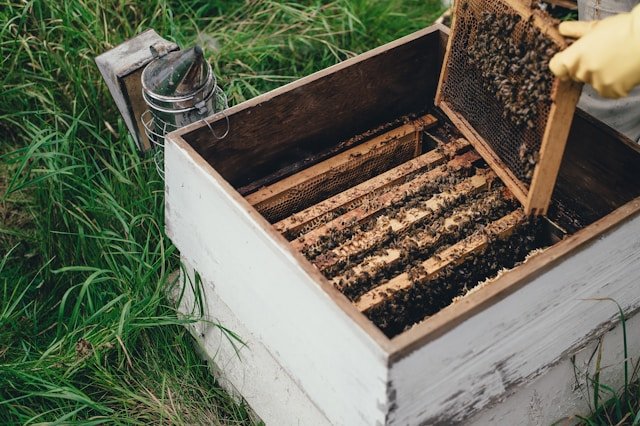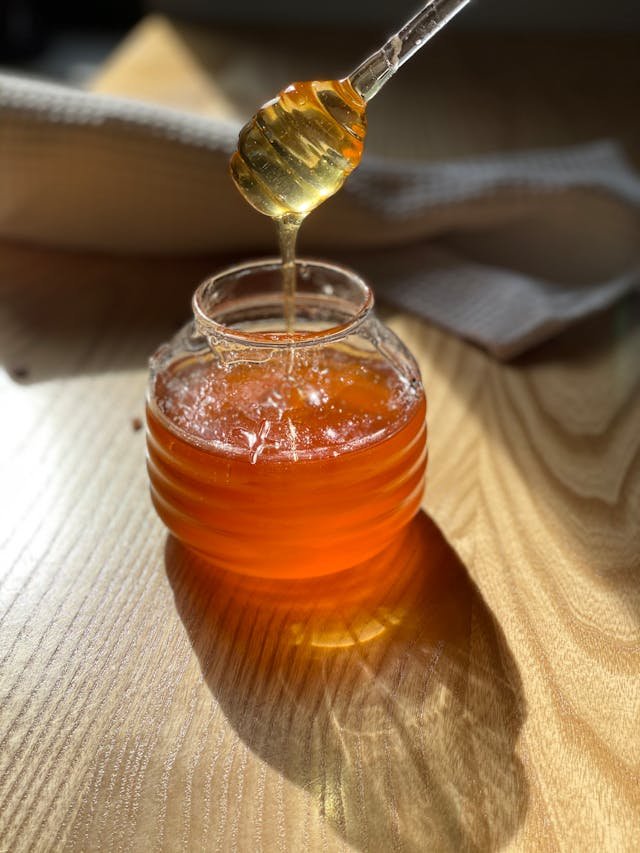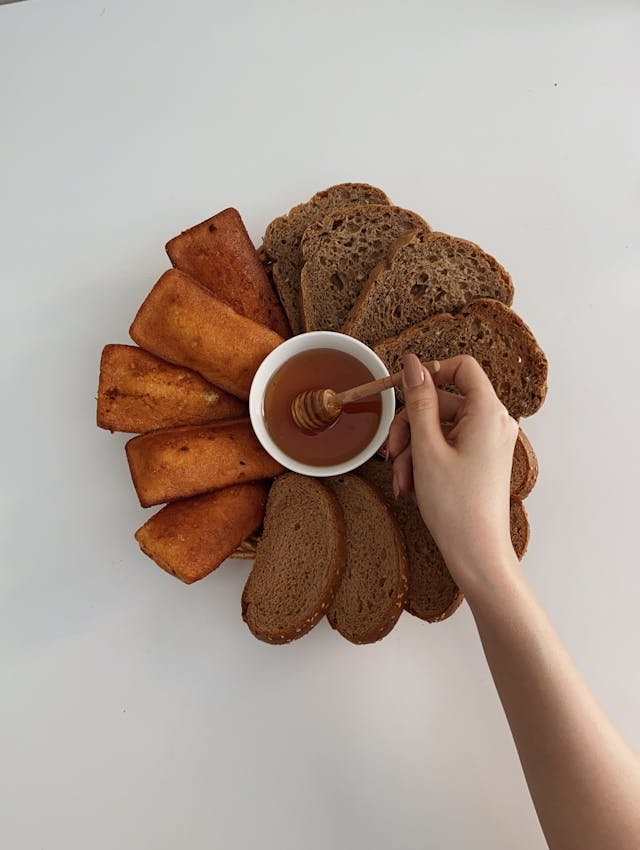As I was previously posted Origin of Australian Honey and it varieties , now I am going to move forward about the The honey-making process in Australian region. The process is fascinating and important. It provides tasty and healthy honey to homes around the world. Honey is a sweet and natural product made by bees. It is used in many homes across the world. In Australia, honey is very important. It is tasty and also healthy. I recall the first time I learned about honey making. It was during a trip to a local bee farm. The process amazed me, and I couldn’t wait to share it with others.
Honey has been a part of human history in ancient times. People have used it as a sweetener, medicine, and even in religious ceremonies. In Australia, honey has a special place. The plants and flowers here are unique. They give Australian honey a flavor that many people love. As a lover of honey, I have always been curious about how it is made. This curiosity led me to explore how honey is made. I visited regions known for producing honey.
Honey Bee Basics
Honey bees are fascinating insects. They live in groups called colonies. There are three types of bees in a colony: the queen, worker bees, and drones. The queen’s job is to lay eggs. Worker bees do many tasks, such as collecting nectar, building the hive, and taking care of the young bees. Drones are male bees whose main job is to interact with the queen.
Each bee has a specific role. The queen bee is the mother of the colony. She can lay thousands of eggs. The worker bees, which are female, need to do almost everything else. They collect nectar and pollen from flowers, make honey, take care of the young bees, and protect the hive. The drones, which are the male bees, have one job – to mate with a new queen.
I once spent an afternoon watching bees in my garden. It was incredible to see how busy they were. Each bee had a role, and they worked together perfectly. Watching them made me appreciate their hard work even more. They are tiny creatures, but they do so much
Regions of Australia Known for Honey Production
Australia has many regions known for honey production. Some of the major regions are:
- New South Wales: This region produces a lot of honey. It has diverse flowers that bees love. I visited a bee farm here, and the honey was delicious. The beekeeper explained how the flowers in New South Wales are different. They give the honey a unique taste. The many types of plants mean bees can make many different types of honey. They do so all year round.
- Victoria is known for its high-quality honey. Its climate and flowers are perfect for bees. I remember walking through fields full of blooming flowers and buzzing bees. The air was filled with the sweet smell of flowers. The honey from Victoria has a smooth and mild flavor that is perfect for spreading on toast or adding to tea.
- Western Australia: This region is renowned for its Jarrah and Karri honey. These types of honey are distinct and have special health benefits. Tasting Jarrah honey for the first time was a memorable experience. It has a rich, caramel-like taste that is unlike any other honey I have tried. Western Australia’s unique flora gives these honeys their special characteristics.
- Queensland: The warm climate here is great for honey production. The honey from Queensland has a unique taste due to the tropical flowers. I visited a beekeeper in Queensland who showed me how they manage their hives. The tropics make nectar available year-round. This gives a constant supply of fresh honey.
Each region has unique characteristics. They affect the taste and quality of the honey. The climate, the types of flowers available, and even the soil can affect the honey. This diversity makes Australian honey special.
The Honey Making Process
The process of making honey begins with bees collecting nectar from flowers. They use their long tongues to suck the nectar and store it in their “honey stomachs.” I watched this process during my visit to a bee farm, and it was fascinating. The bees fly from flower to flower. They are always busy collecting nectar and pollen. They are very efficient and can visit hundreds of flowers in a single trip.
Once the bees come back to the hive, they pass the nectar to other worker bees. These bees chew the nectar for a while, breaking it down into simpler sugars. This process changes the nectar into honey. The bees then spread the honey into the honeycomb cells. The cells are made of beeswax, which the bees produce from special glands on their bodies.
To ensure the honey is the correct consistency, bees fan it with their wings. This helps evaporate any excess water. Once the honey is thick enough, bees seal the honeycomb cell with beeswax. I had the chance to taste fresh honey straight from the hive, and it was the sweetest thing I ever tasted. The fresh honey has a different texture and flavor compared to the honey you buy in stores. It is smoother and has a more intense flavor.
The whole process is a perfect example of teamwork. Each bee knows exactly what to do and works tirelessly to make honey. It is amazing to see how such tiny creatures can produce something so valuable and delicious.
Beekeeping in Australia

Beekeeping is a popular activity in Australia. Beekeepers, also known as apiarists, take care of bees and collect honey. They use special tools like bee suits, smokers, and hive tools. I tried on a bee suit once, and it was quite an experience. It made me appreciate the hard work that goes into beekeeping.
Beekeepers need to check the hives regularly. They make sure the bees are healthy and have enough food. They also collect honey without harming the bees. Watching a beekeeper at work taught me. It showed how much care and knowledge are needed to keep bees happy and productive. The beekeepers I met were passionate about their work. They knew each of their hives and could tell how the bees were doing just by observing their behavior.
One beekeeper told me about the importance of understanding the bees’ needs. He said that beekeeping is a balance between taking care of the bees and collecting honey. If the bees are happy and healthy, they will produce more honey. He showed me how he checks for diseases and pests and how he manages the hives to ensure the bees have enough food.
Challenges Faced by Beekeepers
Beekeeping is not without challenges. Bees face threats from pests and diseases. One common pest is the Varroa mite, which can harm bees. Beekeepers have to be vigilant and use treatments to protect their bees. I have heard many stories from beekeepers. They are about their constant battle with these pests. They have to check their hives frequently. They use special treatments to keep the mites under control.
Environmental challenges also affect bees. Climate change and loss of habitat can make it difficult for bees to find food. Some beekeepers told me how they plant special flowers to help their bees. Their dedication to protecting bees is truly inspiring. They work hard to create a safe and healthy environment for their bees.
Another challenge is the use of pesticides. Some chemicals used in farming can harm bees. Beekeepers must carefully place their hives. They often work with farmers to keep the bees from harmful chemicals. The beekeepers I spoke with were very knowledgeable. They knew the best ways to keep their bees safe.
Conclusion
The honey-making process in Australia is truly special. The hardworking bees and dedicated beekeepers all play a part. They produce this sweet treat. By learning more about how honey is made, we can appreciate the effort and care that goes into each jar.
Supporting local honey producers is important. It helps keep bees healthy and ensures we have access to high-quality honey. Next time you enjoy a spoonful of honey, think about the journey it took from the flower to your table. For me, understanding this process has made honey even sweeter.
I encourage everyone to visit a local bee farm if they can. Seeing the bees at work and talking to beekeepers can give you a new appreciation for honey. It’s a wonderful experience that connects you to nature and the amazing world of bees.
Frequently Asked Questions(FAQ)
What makes Australian honey so unique?
- Australian honey is unique. This is because of the diverse flora in different regions. The flora gives it distinct flavors. For example, Jarrah honey is from Western Australia. It has a rich, caramel taste. In contrast, honey from Victoria is known for its smooth and mild flavor. These flavors are influenced by the types of flowers bees visit and the local climate.
How do bees make honey?
- Bees make honey by collecting nectar from flowers using their long tongues. They store the nectar in their “honey stomachs” and bring it back to the hive. Worker bees then chew the nectar to break down complex sugars into simpler sugars. The bees then put the honey into honeycomb cells. They dry it by fanning with their wings until it’s right. Finally, they seal the cells with beeswax.
What are the health benefits of Australian honey?
- Australian honey is packed with vitamins, minerals, and antioxidants. It can help boost energy levels, soothe sore throats, and aid in wound healing. Types such as Manuka honey are well known for their antibacterial properties. This makes them valuable for medicine.
What challenges do beekeepers face in Australia?
- Beekeepers in Australia face challenges. These include pests and diseases, for example, Varroa mites. They also include environmental factors such as climate change. Climate change affects bee foraging patterns. Beekeepers also must ensure that bees are not exposed to harmful pesticides. They must also manage hive health and honey production amidst these challenges.
How can I support local honey producers in Australia?
- You can support local honey producers. You can do this by buying honey from them or from farmers’ markets. Educating yourself about the importance of bees and their role in farming is helpful. Spreading awareness and advocating for sustainable beekeeping practices also helps. It supports local producers and bee health.



